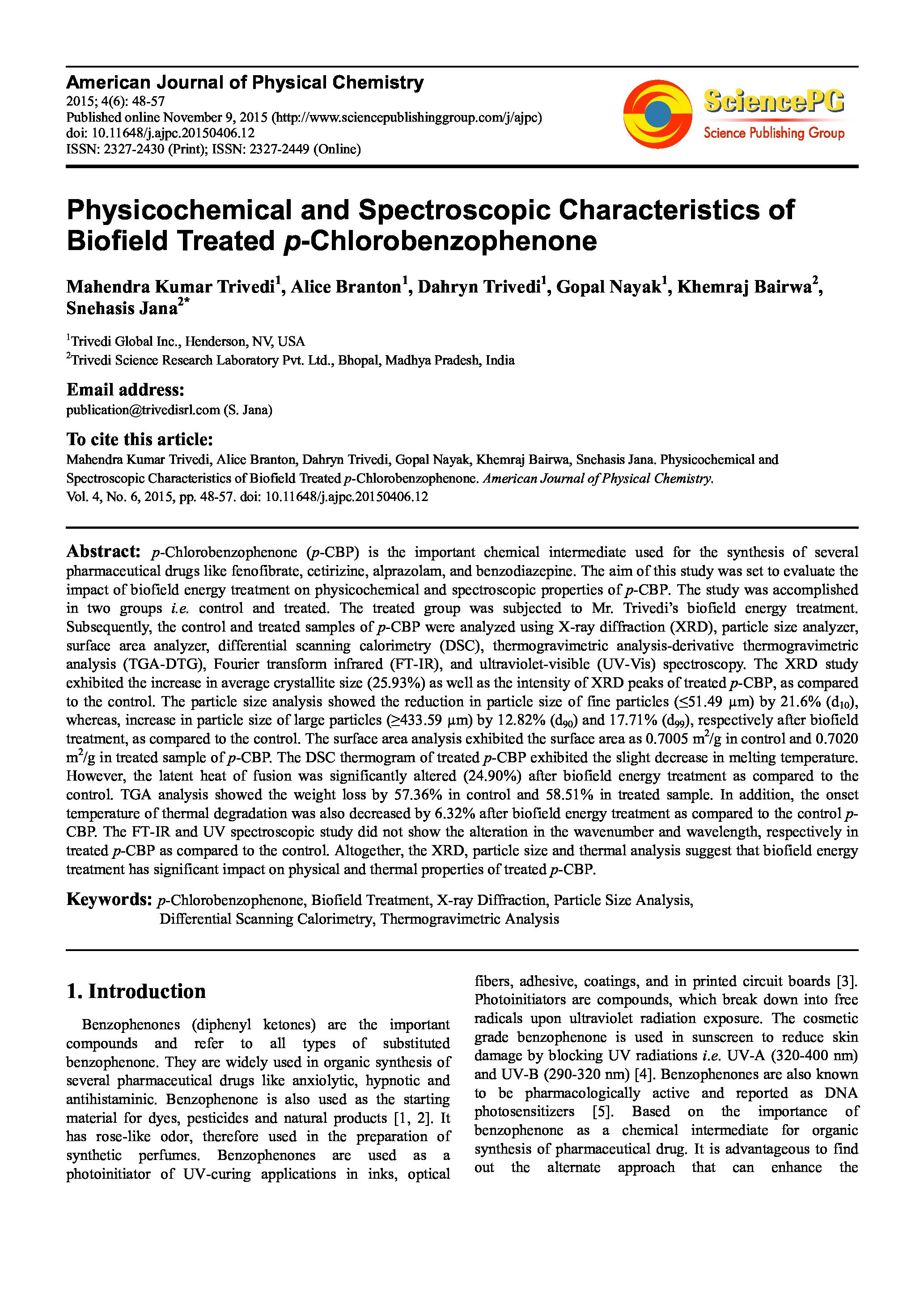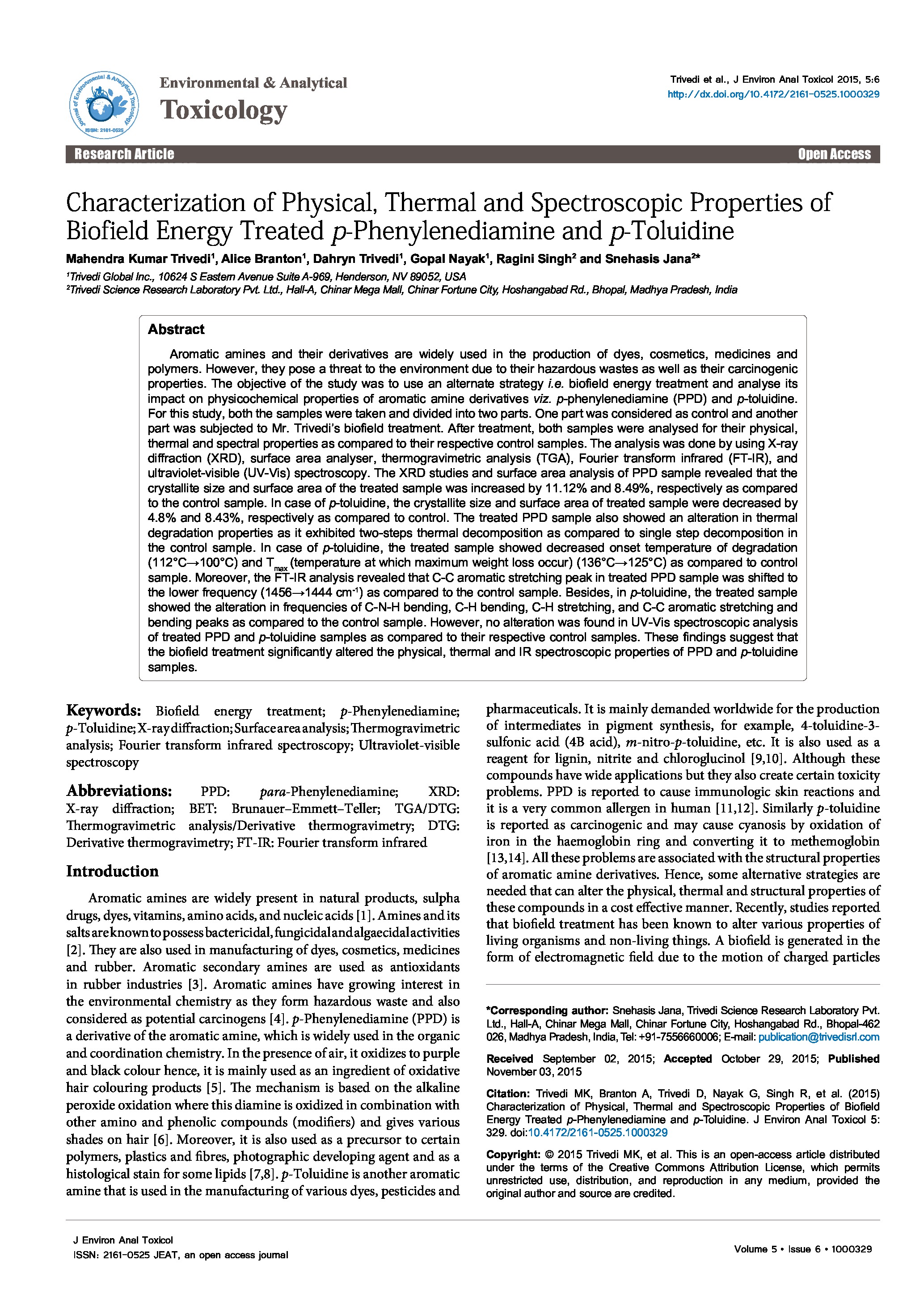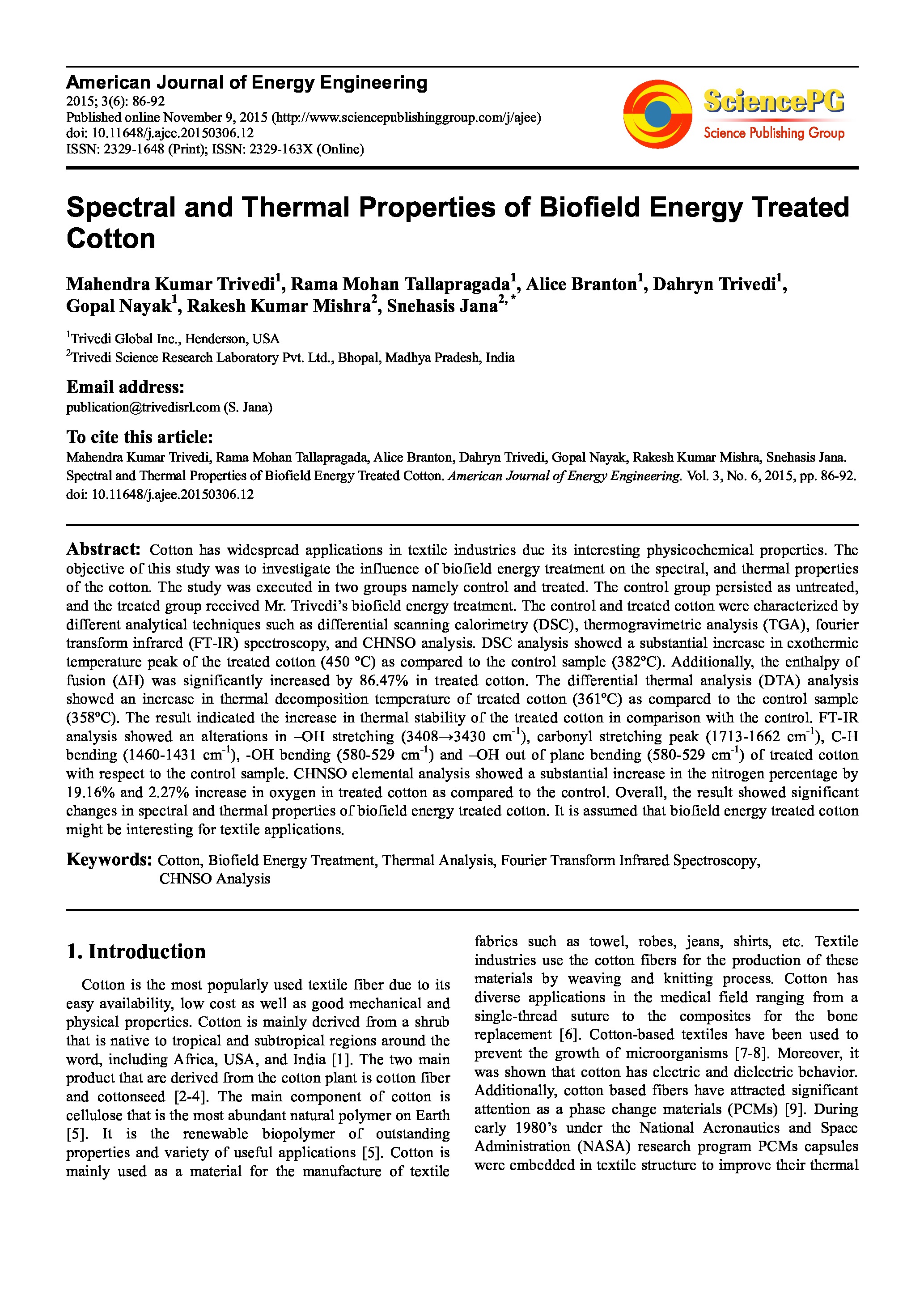Date of upload:
30.11.2016
Co-author:
Mahendra Kumar Trivedi, Alice Branton, Gopal Nayak, Ragini Singh, Snehasis Jana
Abstract:
Aromatic amines and their derivatives are widely used in the production of dyes, cosmetics, medicines and polymers. However, they pose a threat to the environment due to their hazardous wastes as well as their carcinogenic properties. The objective of the study was to use an alternate strategy i.e. biofield energy treatment and analyse its impact on physicochemical properties of aromatic amine derivatives viz. p-phenylenediamine (PPD) and p-toluidine. For this study, both the samples were taken and divided into two parts. One part was considered as control and another part was subjected to Mr. Trivedi’s biofield treatment. After treatment, both samples were analysed for their physical, thermal and spectral properties as compared to their respective control samples. The analysis was done by using X-ray diffraction (XRD), surface area analyser, thermogravimetric analysis (TGA), Fourier transform infrared (FT-IR), and ultraviolet-visible (UV-Vis) spectroscopy. The XRD studies and surface area analysis of PPD sample revealed that the crystallite size and surface area of the treated sample was increased by 11.12% and 8.49%, respectively as compared to the control sample. In case of p-toluidine, the crystallite size and surface area of treated sample were decreased by 4.8% and 8.43%, respectively as compared to control. The treated PPD sample also showed an alteration in thermal degradation properties as it exhibited two-steps thermal decomposition as compared to single step decomposition in the control sample. In case of p-toluidine, the treated sample showed decreased onset temperature of degradation (112°C→100°C) and Tmax (temperature at which maximum weight loss occur) (136°C→125°C) as compared to control sample. Moreover, the FT-IR analysis revealed that C-C aromatic stretching peak in treated PPD sample was shifted to the lower frequency (1456→1444 cm-1) as compared to the control sample. Besides, in p-toluidine, the treated sample showed the alteration in frequencies of C-N-H bending, C-H bending, C-H stretching, and C-C aromatic stretching and bending peaks as compared to the control sample. However, no alteration was found in UV-Vis spectroscopic analysis of treated PPD and p-toluidine samples as compared to their respective control samples. These findings suggest that the biofield treatment significantly altered the physical, thermal and IR spectroscopic properties of PPD and p-toluidine samples.




